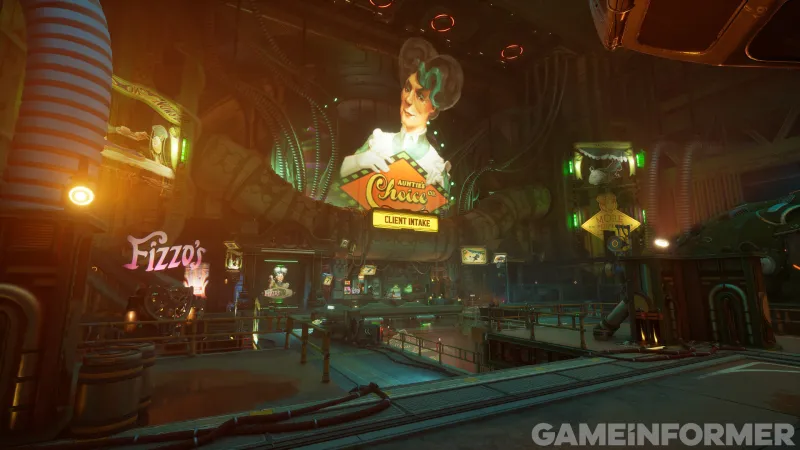When The Outer Worlds launched back in 2019, it features humorous but often sharp writing highlighting the pitfalls of capitalistic ideals and the way markets interact with leaders in power. The Outer Worlds 2 promises even more of that, with a new governing trio fighting for control of the colony of Arcadia, and your Earth Directorate hero somehow in the center of it all.
With The Outer Worlds 2 launching on October 29 (or as early as Thursday if you buy the more expensive Premium Edition), we spoke to developer Obsidian Entertainment to learn more about how the team tackled its second bout with space-faring capitalism and whether or not real life plays a role in how it crafts its messages.
“Unfortunately, those things haven’t fixed [themselves]. I’m shocked,” creative director Leonard Boyarsky sarcastically tells Game Informer when asked about capitalism’s role in The Outer Worlds 2. “These are kind of unfortunately timeless themes that we have to deal with, and we kind of always deal with it in our games. We’ve always been involved in themes of power and balance, and it has to do with people having power and what they’re going to do with that power, and it’s generally not good for the people who don’t have power, whether it’s the Protectorate, who is full authoritarian and makes no bones about being a complete dictatorship [or] it’s Auntie’s Choice, which is trying to find this better way of spinning things so you feel like you’re working for yourself […] but you’re still basically just helping them out.”
When asked whether The Outer Worlds 2 reflects changes in capitalistic thought in the six years since the launch of the first game, Boyarsky says Obsidian doesn’t try to be that timely. “These are universal themes, and if we time it too close to something going on in the world at a specific time, it gets very dated quickly,” he adds. “And again, unfortunately, the bigger themes don’t seem to change all that much from recorded history to now. People who have power tend to abuse the people who don’t.”
Though Obsidian says the real-world acquisition it went through – joining Microsoft and Xbox Game Studios – had no effect on the messaging within The Outer Worlds 2, curiously, Moon Man-fronted Spacer’s Choice and Auntie Cleo’s have merged in this sequel to create Auntie’s Choice. This new organization represents the merchants of the game’s trio of power, which consists of the aforementioned Auntie’s Choice, the monarchy (Protectorate), and the church (Order of the Ascendant).
Boyarsky says the idea of this merger actually happened relatively early in the sequel’s development. Two narrative designers who worked on the first game – Boyarsky notes they aren’t “at the company anymore unfortunately” – came up with the idea of merging Spacer’s Choice and Auntie Cleo’s.
“It was the natural way to go,” he says. “To put them together, it made the most sense. They were the ones out of everybody in all of the corporations in the colony; they were the ones who seemed to have the most presence. Putting them together was a no-brainer.”
He and game director Brandon Adler tease that players will have to see how Auntie’s Choice handles its role in this trio of power in The Outer Worlds 2 when it launches this month.
Game Informer’s cover story for The Outer Worlds 2 is available to read right now if you’re a subscriber (and this issue is shipping to mailboxes as we speak). For more about the game, check out the other pieces of exclusive coverage Game Informer has published by clicking the links below:
Are you jumping into The Outer Worlds 2 this month? Let us know in the comments below!


